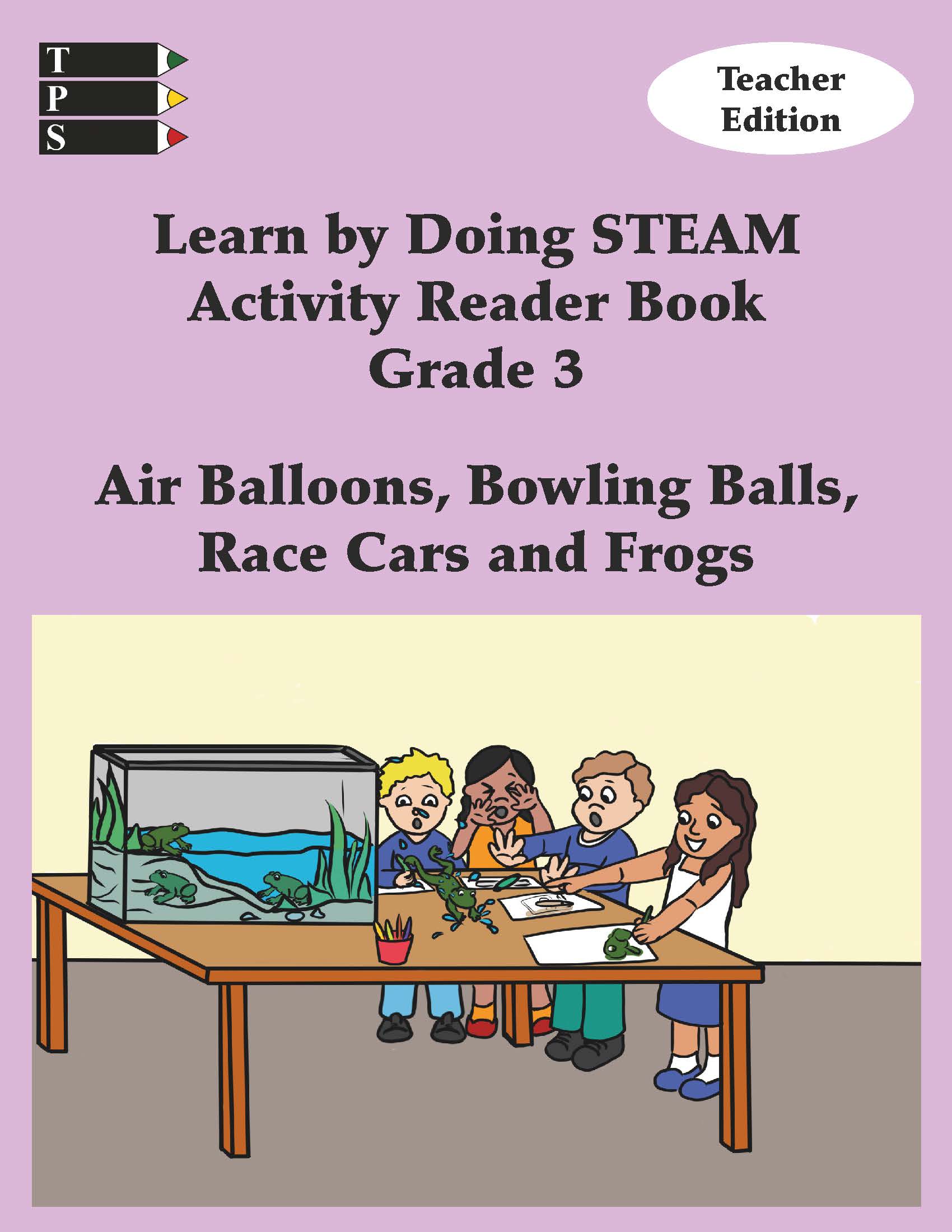Within this STEAM Reader Activity Book, the students of Third Grade at Sunny Street Elementary School continue their journey with our readers. The following describes key content areas in the book and is meant as a general summary as is not comprehensive of content.
Our reader book opens to the class studying the physical properties of matter in order to classify materials. They then learn about density and the ability of a material to sink or float. Finally, a hot air balloon lands on the school field in an emergency landing. The passengers on the balloon teach the class about air density and how this allows the balloon to rise and fall. They learn about how Isaac Newton discovered the force of gravity and how this impacts objects on Earth.
Our readers then follow the class as there is a power outage and they realize how so many of their activities depend on energy. They learn about energy and its different forms, and the difference between potential and kinetic energy and its application to movement of objects for example a bowling ball. They learn about simple machines and build model race cars using their knowledge of energy and its language to describe how potential energy becomes kinetic energy as they push their cars. This culminates in a very close race car competition!
The class continues its study of objects in the sky and beyond. They begin when class student Zane shares that his house now has solar panels. They learn about how the energy from the Sun impacts the Earth and how the orbit of the Earth around the Sun causes seasons that have different characteristics depending upon which hemisphere you live in. The class now understand why relatives that live in the southern hemisphere have different weather patterns to them. They class apply their knowledge of solar energy to building solar cars.
The class prepares for a field trip to the national parks by learning about what lies beneath their feet and the different landforms on the Earth. They learn about rapid changes to landforms caused by volcanic eruptions, landslides and earthquakes. They use design engineering to create model buildings that are tested on a quaker-shaker table for earthquake stability. The students finally are prepared for their trip to a National Park, where they learn first-hand about weathering, erosion and deposition. They also learn about conservation and how natural resources like rocks, and wood are used to make everyday products. Finally, they discover a fossil of a shark’s tooth on an exploratory dig.
On the second day of the fieldtrip the students hike to a temperate forest ecosystem and learn about its living and non-living parts and how the living things are dependent on the non-living things. They learn that changes for example drought, can seriously impact the living things in an ecosystem. They study animal and plant adaptations and food chains and their different levels. Finally, they learn about the life cycle of a frog and take tadpoles back to their class to study. They watch the tadpoles go through metamorphosis into frogs. They care for the frogs needs by feeding them grasshoppers, until the grasshoppers escape!

